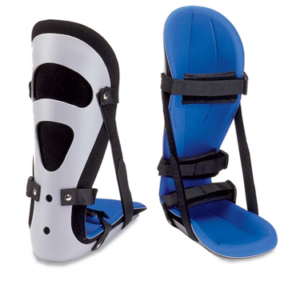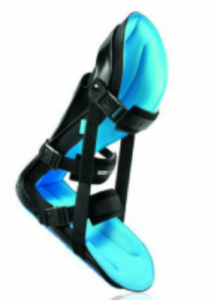Benefits Of A Resting AFO, Aka Stretch Brace
No matter what your activity level is, it is important to stretch your ankles and calves every single day. Whether you are an active person or someone who is required to be seated majority of the day, stretching consistently will allow an increase in flexibility, decrease pain, and reduce your risk of injury such as Achilles tendinitis.

Achilles tendinitis is an overuse injury of the Achilles tendon; the band of tissue that connects calf muscles at the back of the lower leg to your heel bone. This tendon is used when you walk, run, jump or push up on your toes. There are many factors as to why and how you can become injured or may increase your risk of Achilles tendinitis. Your age, level of physical activity, certain medications taken, medical conditions such as high blood pressure, shoe selection, men are at a higher risk than females, and your physical condition such as a naturally flat arch in your foot, obesity, and/or tight calf muscles. Symptoms may be heel stiffness, swelling, or tenderness. Your doctor will evaluate and determine if you have Achilles tendinitis and guide you in the right direction for treatment such as physical therapy, medication for pain management and/or swelling, orthotic devices, and possibly surgery. While it may not be possible to prevent Achilles tendinitis, you can take measures to reduce your risk by increasing your activity level gradually, properly warming up before strenuous activity, wearing the correct size shoe, stretching daily, and strengthening your calf muscles. Stretch splints are a great way to treat and/or prevent further injury.
Stretch braces are worn while resting and/or sleeping. Stretch Splints work by stretching the calf and plantar fascia (connective tissue) of the foot as you rest/sleep. This helps to minimize stress on the areas of the foot that are inflamed, irritated, or tight. Your doctor, physical therapist, or orthotist might recommend that you wear a splint that stretches your calf and the arch of your foot while you sleep. This holds the plantar fascia and Achilles tendon in a lengthened position overnight and facilitates stretching. The amount of flexion and extension can be adjusted as needed.
There are many options on the market for stretch splints. Speaking with your doctor, therapist, or orthotist will guide you in the right direction for the perfect brace for you! For example, A popular splint offered has a rigid exterior shell, a soft padded lining for comfort and to prevent skin irritation, and adjustable straps to ensure immobilization. The straps are adjustable to increase or decrease the amount of flexion and extension. Over time, patients can increase the degree of stretch to reach their full potential.
An Infinite Technologies clinician will conduct a very detailed assessment to determine the proper orthosis for you. By request, we can coordinate a joint evaluation with your physician, therapist, or other healthcare professional. Walking evaluations, muscle strength and flexibility, and lifestyle goals are some categories that will be focused on at your evaluation. Your practitioner will continue to follow up and track your progress. Our office is more than happy to answer any questions you may have about this specific brace, other products, or our company.





